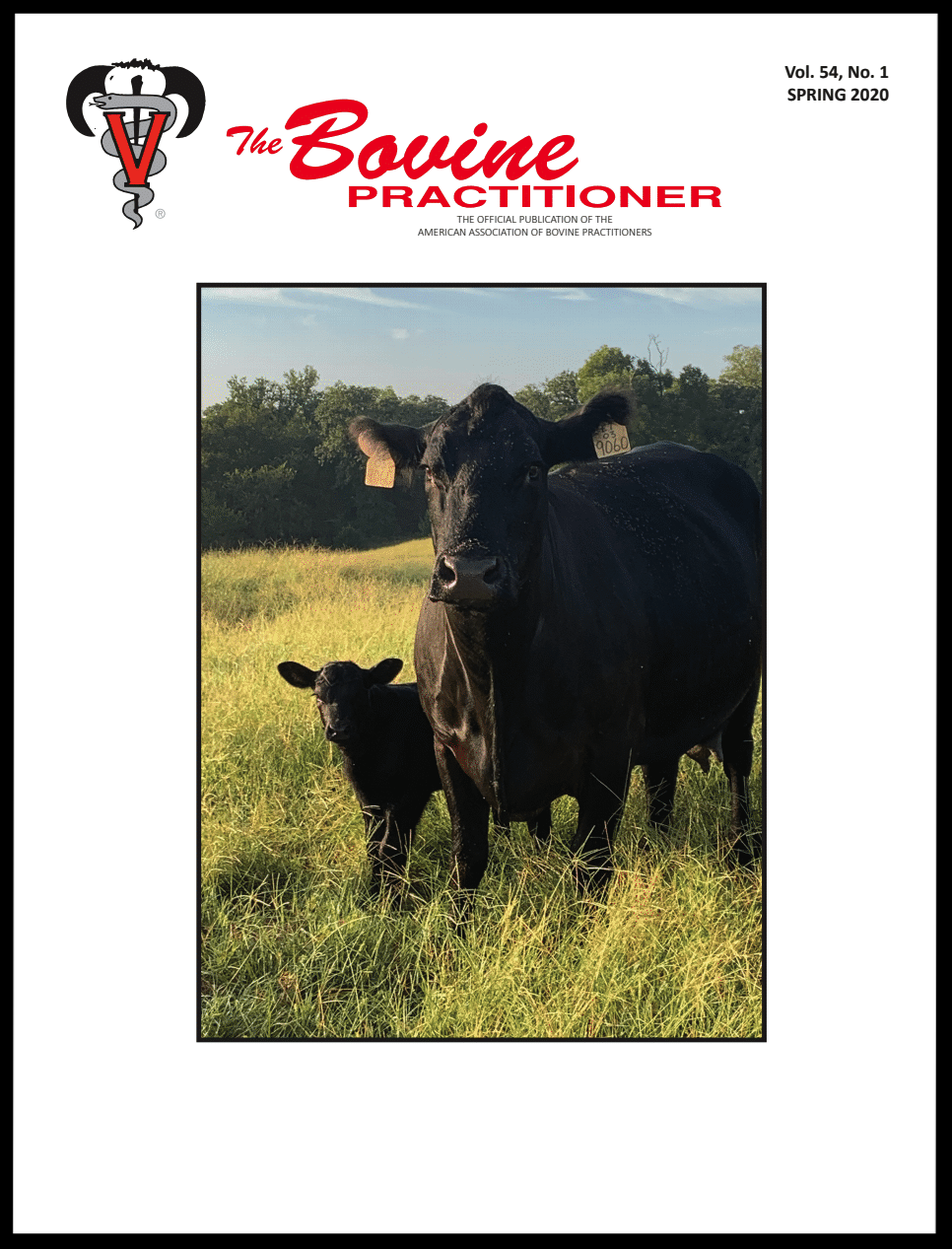Clinical effectiveness of enrofloxacin 100 mg/mL injectable solution for the treatment of acute anaplasmosis in cattle caused by Anaplasma marginale
DOI:
https://doi.org/10.21423/bovine-vol54no1p51-57Keywords:
Anaplasma marginale, anaplasmosis, treatment, enrofloxacin, bovineAbstract
Anaplasma marginale is a gram-negative rickettsial pathogen that can cause clinical anemia and death in cattle. The objective of this study was to evaluate the effectiveness of enrofloxacin (ENR) 100 mg/mL at a single subcutaneous dose of 5.7 mg/lb (12.5 mg/kg) for treatment of acute anaplasmosis (ANA) in mature beef cows (n=67). Following intravenous inoculation with A. marginale-infected blood, cattle were monitored for clinical signs of ANA. Upon meeting case criteria, cattle were randomly assigned to receive ENR or saline (SAL). Treatment success, defined as 28 d post-treatment survival and resolution of abnormal clinical scores, was 81.8% (27/33) and 44.1% (15/34) (P=0.0032) for ENR and SAL treated cows, respectively. Mortality was 47% (16/34) and 3% (1/33) in SAL and ENR, respectively (P=0.0027). Packed cell volume at 7, 14, 21, and 28 d post-treatment was significantly greater in ENR compared to SAL (P<0.05). In this study, ENR improved treatment success compared to SAL, reduced ANA mortality, and maintained greater packed cell volumes post-clinical signs compared to SAL. Extra-label use of fluoroquinolones in food animals is prohibited in the United States, but ENR (Baytril® 100-CA1) was recently conditionally approved for treatment of ANA.






